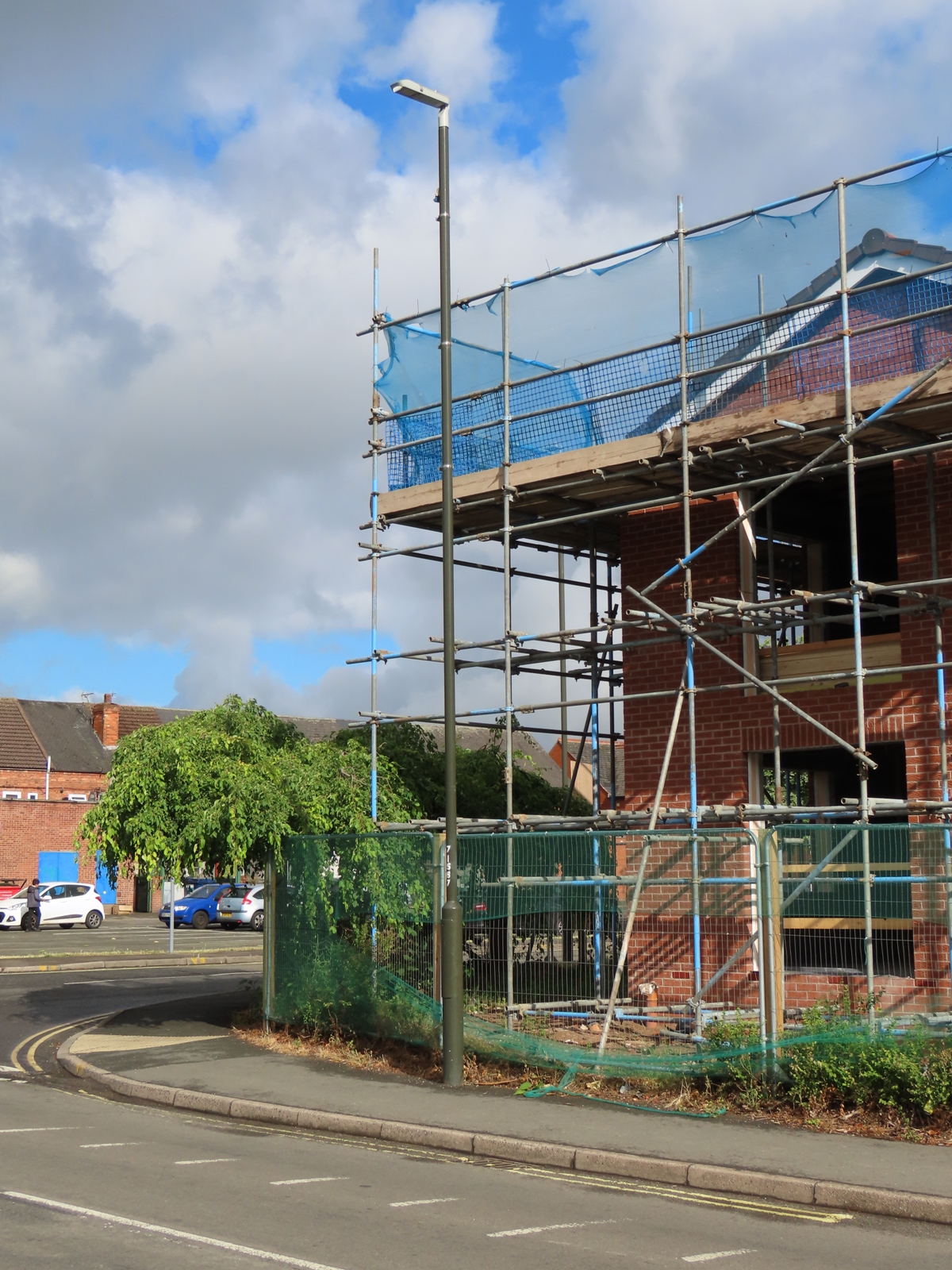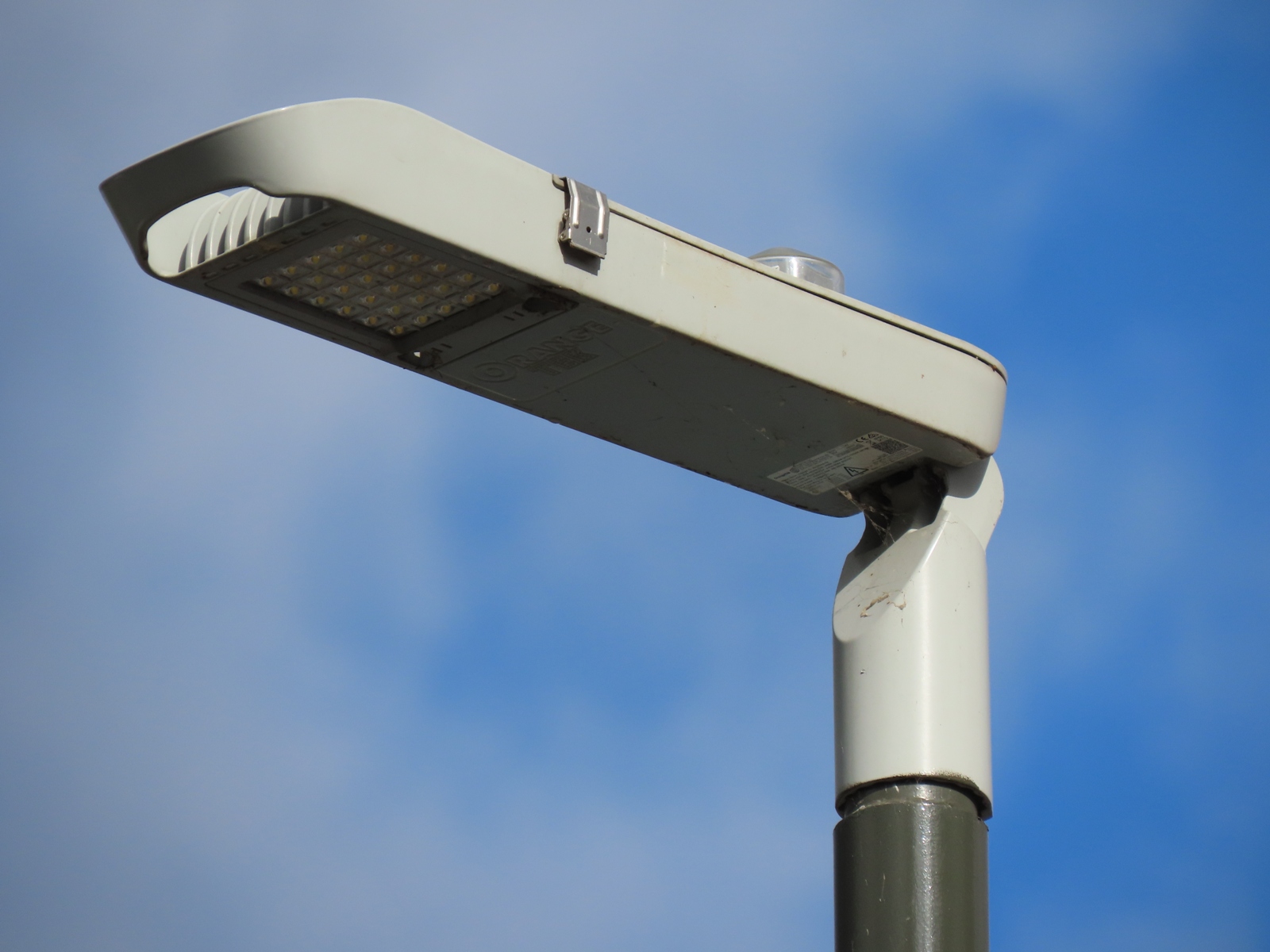Local OrangeTEK Voyagers
In Derbyshire, the Voyager can
be seen at mounting heights ranging from 5 m to 8 m; the varying quantity of
LEDs, along with their running current, allowing flexibility in providing
different light levels at these heights.
This example is to be found on a
side street in Clay Cross; it being installed, along with the column, in
September 2017 as a replacement for an older 5 m column supporting an ELECO GR
5011 35 Watt SOX lantern.
A
SELC / Westire AcRo photocell set at 35 Lux
provides a means of switching the lantern on and off as necessary.
This close-up of the label tells us all that
we would ever wish to know about the lantern - in operation, the 4000 K LEDs are
driven at 300 mA, with a total power consumption of 13 Watt; however, there is
a dimming regime incorporated into the LED driver - the lantern runs at 100% operation
from dusk until 21:30. From then until midnight, the output is reduced to
75% operation. Between midnight and 05:00, the output reduces again; this
time, to 50%. The output increases back to 75% from then until 06:00.
Finally, full brightness is returned after 06:00 until dawn. The Time Zone
is described as "London", although, there is no mention of whether this is
GMT, BST or both. The beam distribution on this example is described as 'MDE'
- for roads of a 'medium' width. Meanwhile, the address for the company is
given as the 5th Floor of 192 Dadun Road, in the Nantun District of
Taichung City, Taiwan...or
here, in other words! A far cry from the
very rural Staffordshire base for
OrangeTEK's UK office. Curiously, while the
uppermost label states a manufacture date of March 2017, the lower label
suggests a manufacture date of December 2016 instead. The close-up image
also reveals that the lantern is set to a tilt of five degrees above the
horizontal.
An air gap is provided at the front
of the lantern as a means of dissipating heat away from the LEDs.
Although the lantern appears to be running 30 LEDs, many of these
positions are blank on the circuit board. Only the two rows that
border the centre row are equipped with LEDs, making the actual
total 12.
Elsewhere in Clay Cross is this
example attached to a 6 m column.
The overall appearance of the
lantern is no different from the example seen above.
Only when the label is zoomed
in on do the changes begin to be spotted. Whilst the running
current remains at 300 mA, the wattage is now 24 Watt, owing to
the inclusion of more LEDs. This is an older lantern, as the
individual identification is provided with a couple of
barcodes, instead of the more modern QR-type code seen
above. The registered address in Taiwan is also different;
here it is listed as 'OMA Lighting Co. Ltd', which is based
on the 11th Floor of 90 Xingde Road, in the Sanchong District of New
Taipei City, Taiwan, which can be seen
here.
The narrow profile of the
lantern can be appreciated here.
Access to the
internal wiring of the lantern is gained by
releasing the two stainless steel catches that are
fitted to the sides of the lantern.
Several other
examples are seen along the road.
Here, all but
the centre row of the circuit board is
equipped with LEDs.
Fields Farm Road in Long
Eaton is also home to a number of these lanterns. These were installed on new columns in September 2016 and replaced 8 m
columns supporting (mostly) 90 Watt SOX lanterns.
As with their predecessors, the
new columns are 8 m in height.
Once again, the same basic lantern is fitted.
The lantern measures 621 mm (24.44 in) × 167
mm (6.57 in). The full complement of 30 LEDs are fitted here. Let's have a
look at the information label towards the rear of the lantern...
This time, the LEDs are
driven at 700 mA, with a total power consumption of 66 Watt; however, the same
dimming regime is employed. The beam distribution on this example is described as 'NDE'
- for 'narrow' roads.
Further examples are seen after the bend is
traversed.
AcRo photocells
are fitted here too.
Several 66 Watt
Voyagers were installed along Portland Road in Shirebrook, as part of the
construction works for a new supermarket.

Instead of being painted black, as most
Voyagers in Derbyshire are, these are painted light grey instead, although
there is no difference in the actual operation of the lantern.

The close-up of this label shows that a 'WDE'
("Wide") optic is employed here.

BACK TO LOCAL SIDE-ENTRY LANTERNS
BACK TO LOCAL LANTERNS
BACK TO INDEX
CLICK HERE TO MAKE A MONETARY DONATION
© 2002 -
English Street Lights Online